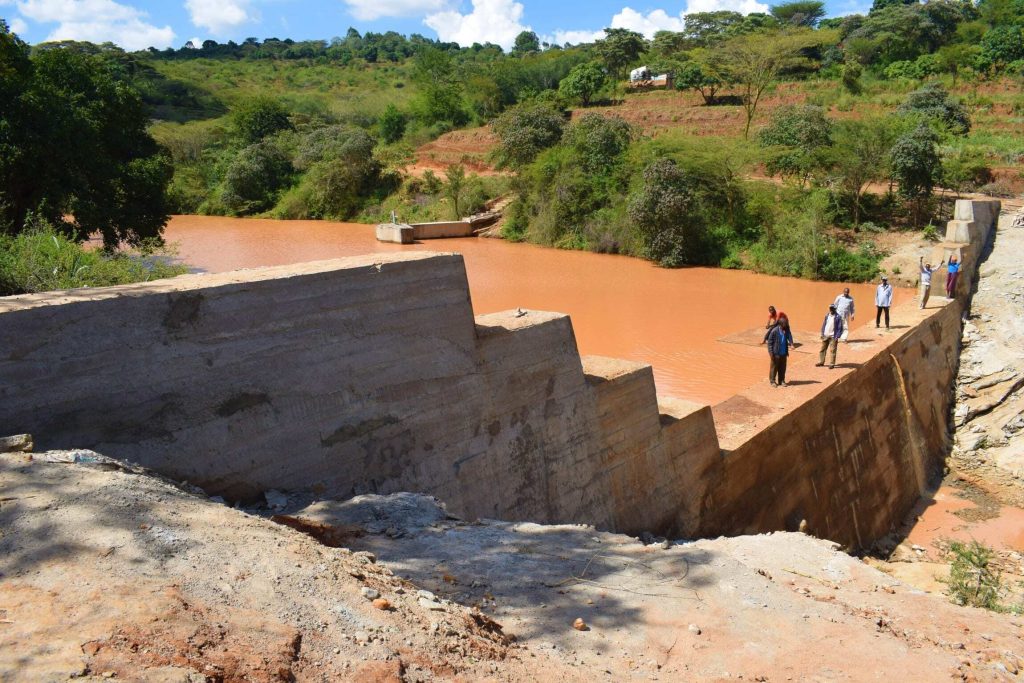5 Surprising Ways Sand Dams Reinvigorate Communities

Sand dams are an innovative, sustainable, and cost-effective technology used to improve water access in dry regions worldwide. A sand dam is a small dam constructed across a seasonal river or stream bed where water flows during the rainy season. The dam is built to capture and store water in the sand that accumulates behind the dam. The stored water can then be accessed, especially when the water source mostly disappears: the dry seasons.
Unlike with traditional dams, sand dam construction does not require large amounts of concrete, steel, or other materials. In fact, they are designed to allow the majority of the water in the river channel to continue downstream.
They are built using locally available materials such as stones, sandbags, and soil, making them affordable and accessible to local communities. Sand dams are also low-maintenance, with minimal environmental impact, and do not cause the displacement of people or wildlife. The communities we work with in Southeast Kenya collect the materials needed to build the sand dam and provide labor to construct it.
The primary use for sand dams is to provide reliable access to water in dry regions where water is scarce or irregularly available. In these regions, people often rely on rainfall for water, which is inconsistent and often insufficient to meet their needs. Sand dams help capture and store water from rainfall, increasing water availability for domestic, agricultural, industrial, and even ecological purposes. The stored water can be used throughout the year, even during the dry season when water is scarce.
Sand dams have several key features that effectively improve water access and livelihoods in dry regions. These include:
- Capturing and storing water. Sand dams are built to capture and store water from rainfall. As water flows down a seasonal river or stream bed, it is trapped behind the dam in the accumulating sand. The stored water can then be accessed throughout the year, even during the dry season when water is scarce.
- Recharging groundwater. Sand dams also help to recharge groundwater by allowing water to seep into the ground behind the dam. This helps replenish underground water sources often depleted in dry regions.
- Providing a source of water for agriculture. Sand dams provide a reliable source of water for agriculture, which is essential for food security and livelihoods in dry regions. Farmers can use the stored water to irrigate their crops, increasing yields and improving their income.
- Improving access to water for domestic use. Sand dams also provide water for essential everyday tasks like drinking, cooking, and washing. This is particularly important for communities situated far from other water sources, such as rivers or wells.
- Generating hydroelectric power. In some cases, sand dams can also generate hydroelectric power. As water flows through the dam, it can be used to power a turbine, generating electricity for local communities.
Sand dams have been successfully implemented in several dry regions worldwide, including Kenya, Ethiopia, and Tanzania. In these regions, sand dams have helped to improve water access and livelihoods for thousands of people. For example, in Kenya, sand dam construction has helped increase crop yields, improve livestock health, and reduce the time and effort required to collect water. Sand dams have also helped reduce conflicts over water resources, as they provide a reliable water source for multiple uses.
The construction of sand dams requires the involvement of local communities, as they are the primary beneficiaries of the technology. Local communities are involved in the planning, designing, and constructing the sand dam, as well as the maintenance and management of the dam after it is built. Community involvement helps to ensure that the sand dam meets the needs of the local community and is sustainable in the long term.
Learn more about how sand dams work and their impact in Southeast Kenya here.
Home More Like ThisTweet